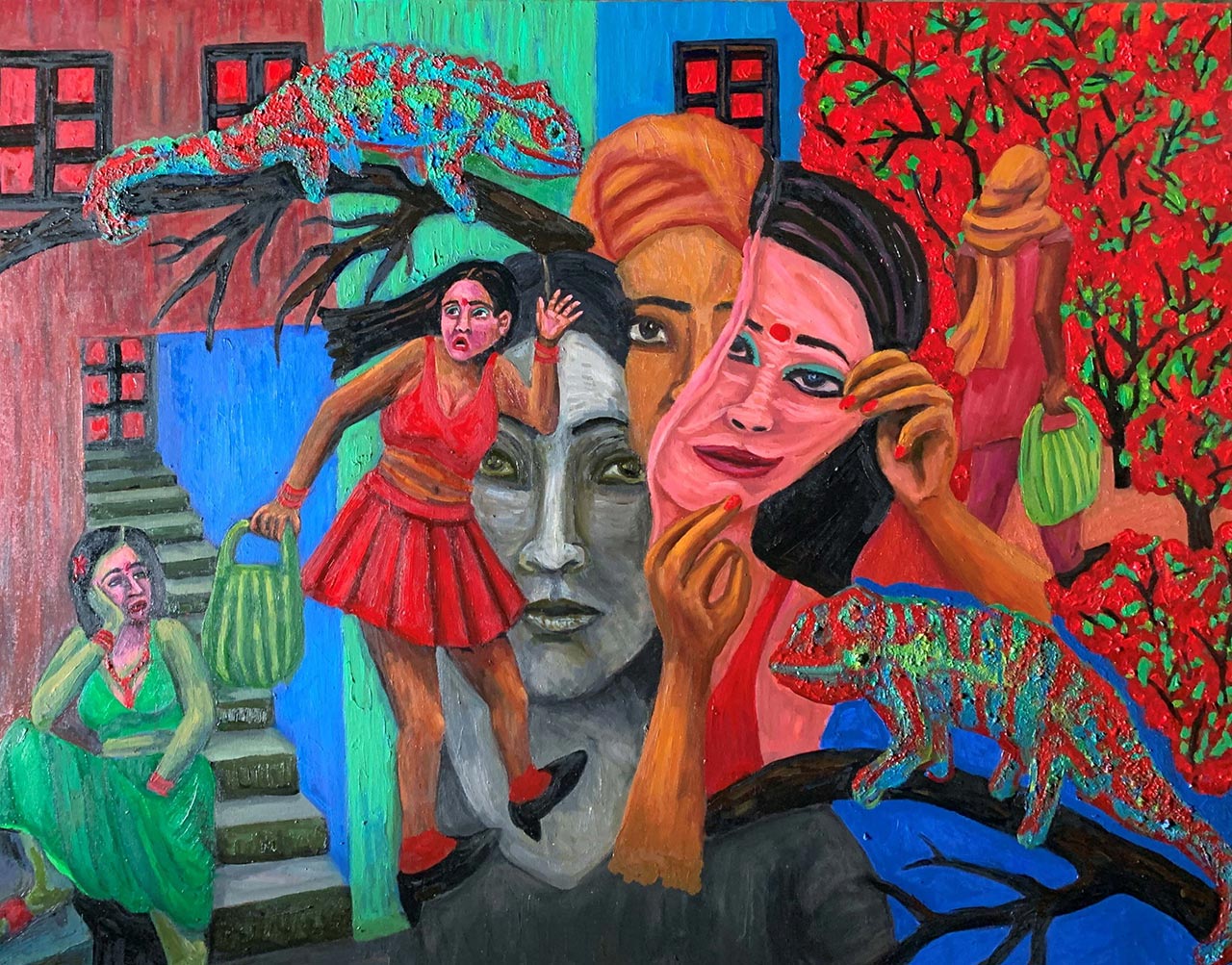
New Delhi will soon present the sixth solo exhibition by the famous socially engaged artist Ranjan Kaul, “Within, Without: Tales of Evanescence.” The exhibition will be first presented at LTC, Bikaner House between 19th and 23rd September 2025; then it will move to Urban Fringe, Okhla Phase I between 27th September and 5th October 2025. The exhibition is not only a presentation of an artist’s work but more importantly an investigation into humanitarian issues and identity, and the tenuous boundary of visibility and disappearance.
Building from all things social, psychological, criminal and political, Ranjan Kaul creates visual narratives that starkly reflect truths about society. Ultimately, the exhibition draws from newspaper ads of missing people and actual stories of disappeared people, both enforced and voluntary. The exhibition is a commitment from Kaul to present the voices of the silenced and to make the absent visible.
Key Details of the Exhibition
| Event | Details |
|---|---|
| Exhibition Title | Within, Without: Tales of Evanescence |
| Artist | Ranjan Kaul |
| Mediums | Oil and acrylic paintings, woodcut prints, collages, sculptures, installations |
| Curatorial Advisor | Ina Puri |
| Venue 1 | LTC, Bikaner House, Pandara Road, New Delhi |
| Dates at Venue 1 | 19–23 September 2025 (11 am – 7 pm) |
| Venue 2 | Urban Fringe (Basement F-15), Okhla Phase I, New Delhi |
| Dates at Venue 2 | 27 September – 5 October 2025 |
Curatorial Perspective
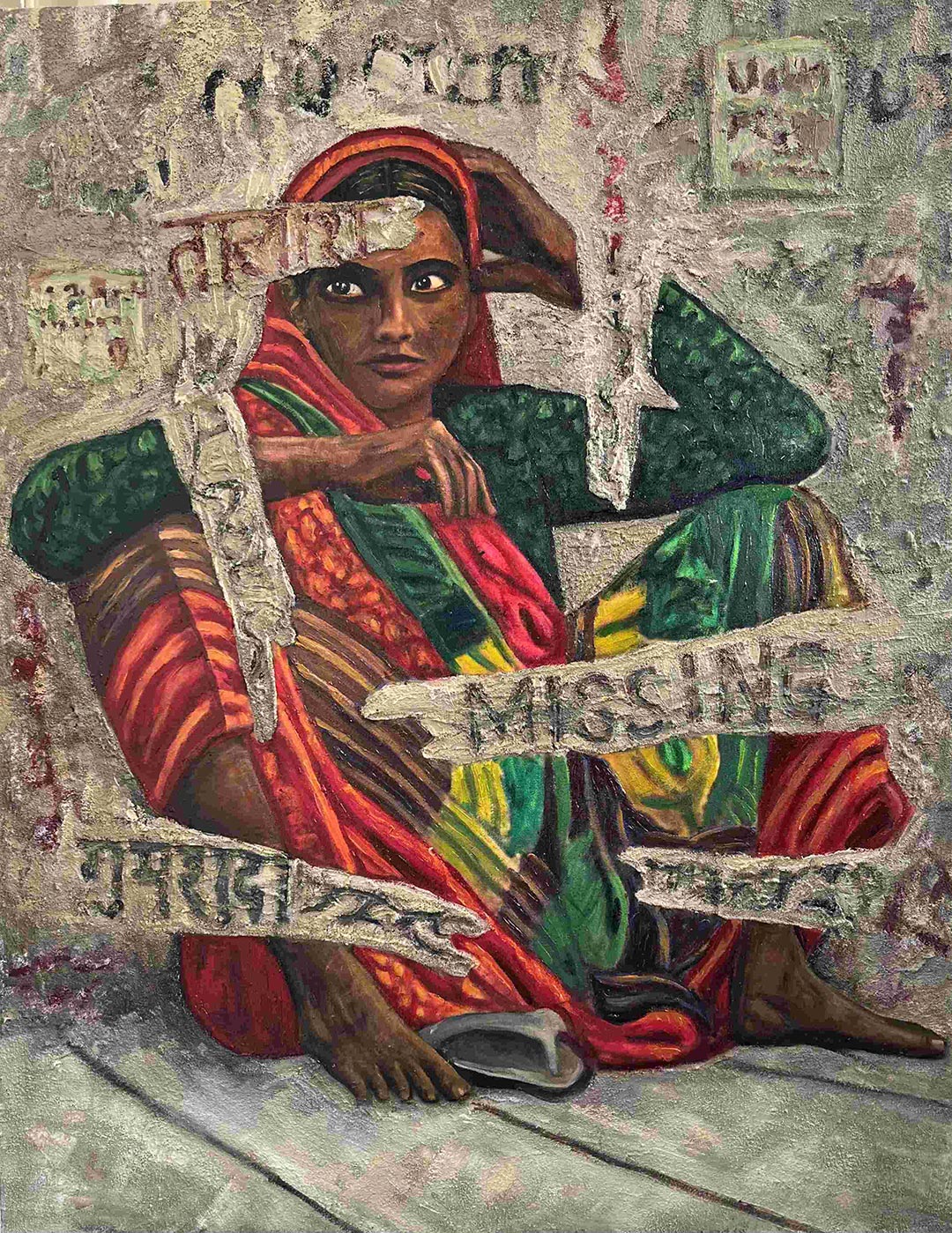
Curatorial advisor Ina Puri captures the spirit of Kaul’s vision when she remarks:
“Pouring over newspaper reports and data gleaned from news agencies, Kaul has made missing people his subject for some years now. He has gathered yet more reason to express his deep empathy and helplessness for the plight of the victims who have had to face the harshest trials and tribulations for no fault of theirs.”
She further emphasises the symbolic dimension of his work:
“By layering his compositions with symbolism, metaphor and allegory, Kaul pays homage to the many who have gone missing but remain unforgotten by those they have left behind, especially the artist himself. Resonating with issues that remain without closure or justice, Kaul’s art is both a heart-filled tribute and a lament.”
Humanitarian Concerns in Art
Kaul has created the pieces in this exhibition from a deep concern for humanitarian matters. He is addressing the suffering of those we have lost to sex trafficking, organ trafficking, migration crises, voluntary disappearances, and conflicts, which have rendered entire populations vulnerable and untethered. Each painting, collage, print, or sculpture has been born from his sympathetic, nuanced, engaged gaze.
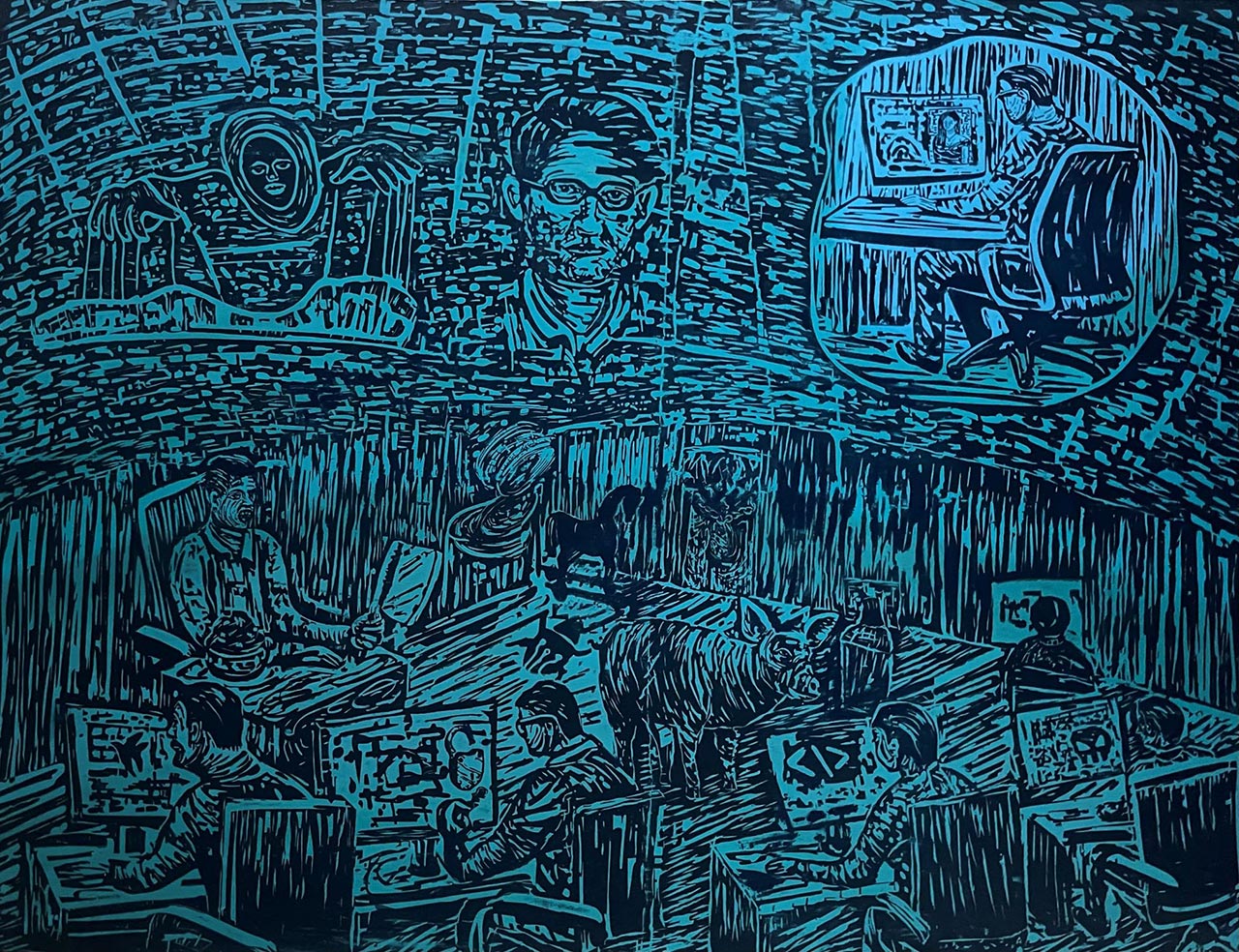
Some of the works are more pronounced in their emotional charge:
- Leaving Home: It depicts a mother and daughter leaving an abusive husband, quietly and painfully telling their story of survival.
- The Red Room: An attention-catching collage that depicts a girl being abducted and exploited.
- A New Identity: It illustrates the tortured but resolute portrait of a sex worker who is trying to escape and renew her life.
- Cataclysm in Sudan: It is a portrayal of survival in the midst of extreme civil war and women driven to dire desperation.
- Equus Siege: A woodcut engraving that explores themes of cybercrime, deceit, and mental anguish.
All of Kaul’s work is at once testimonial and allegorical, pulling us from the private to the public and the symbolic to the visceral.
Symbolism and Visual Language
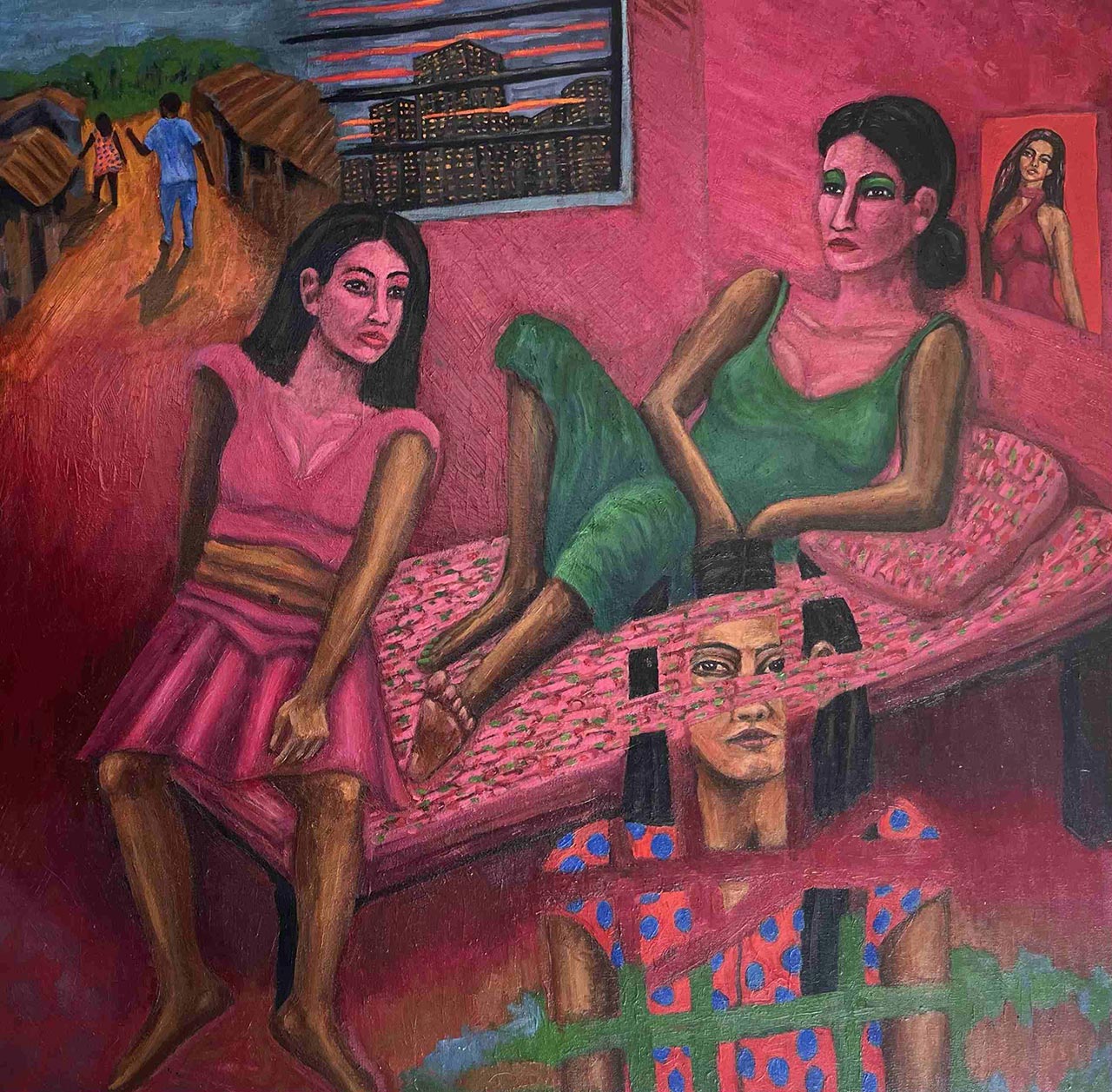
Kaul’s pieces use a restrained colour palette; they capture the weight of absence and the precariousness of being. He conceives metaphors that convert invisibility into being. Animals and birds arise as potent devices in the work as well. In pieces such as Blackbird, a sculpture, they become tacit witnesses to survival, disappearance, and imagined reclamation.
This commitment to allegory allows the work to transcend documentation. What begins as documenting experience, while infused with research and observation, becomes layered art, expressing emotional capacity and poetic truth. The muted palette, perhaps, emphasises dignity, gravity, and empathy rather than drama.
Artist’s Own Reflections
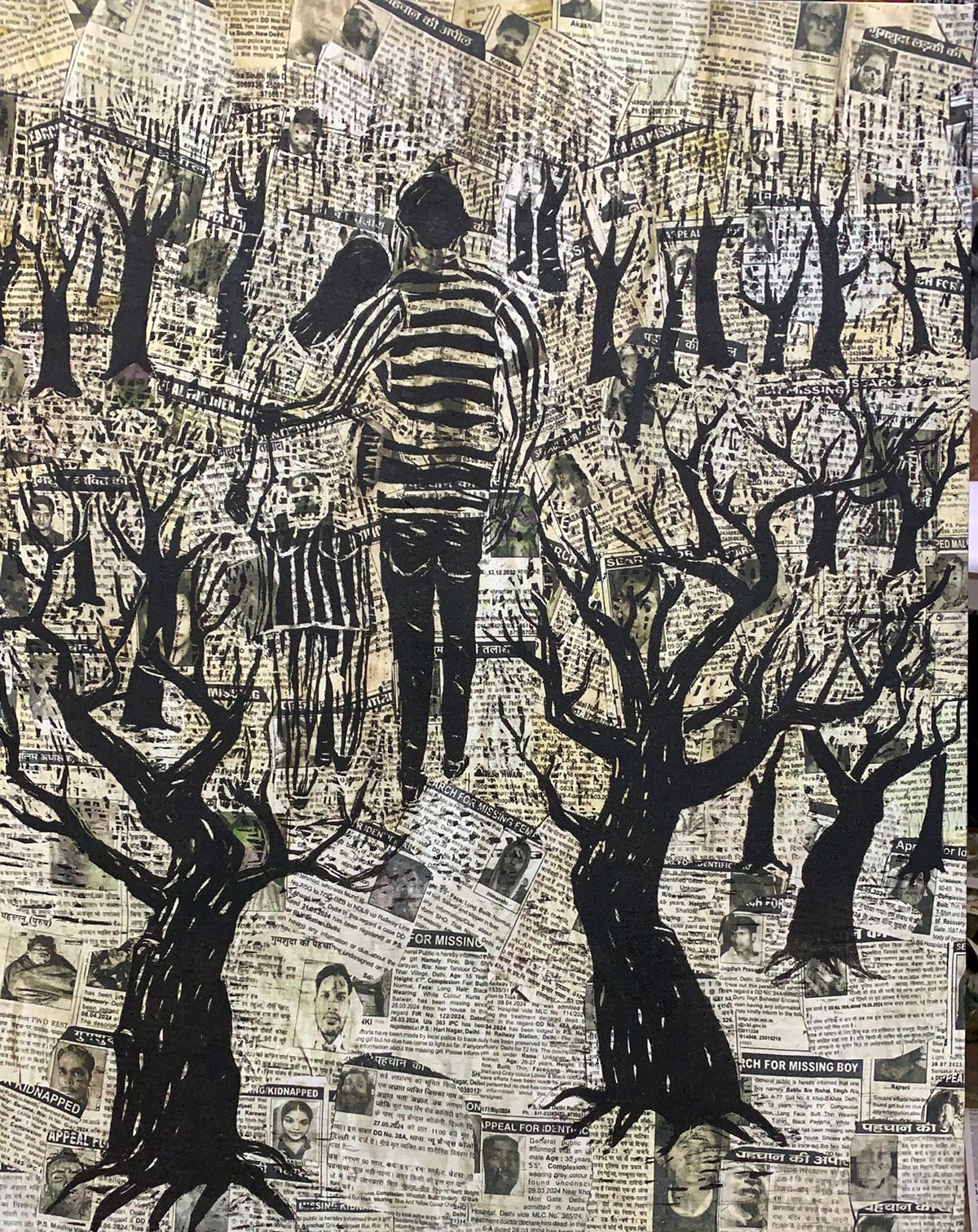
In his practice, Kaul states:
“As in all my work, this exhibition reflects my intense engagement with humanitarian themes that touch my sensibilities. Revolving primarily around missing persons, the visual narratives and portraits in the show explore the many facets of existence, identity and obscurity. While there is diversity in my art, there is an underlying singular, personalised aesthetics in relation to the use of form, texture and the colour palette”
This observation is restorative of the oneness of media and subjects in difference. While these works reflect narratives of domestic violence, sex trafficking, conflict in Sudan, and cybercrime, what holds them together is Kaul’s unique quality of aesthetic constraint with emotional richness.
Themes in Focus
- Missing persons and the disappearance of people, both enforced and voluntary.
- Sex and organ trafficking and the silencing of exploited lives.
- Domestic violence as a recurring theme of displacement and courage.
- Migrant persons and children caught in active conflict.
- Civil wars erasing identities at scale.
All of these issues are made richer by Kaul’s capacity to amplify the invisible stories without making them mere numbers. These themes are under a broader theme, resonating with the humanitarian concerns around the world.
A Collective Act of Remembrance
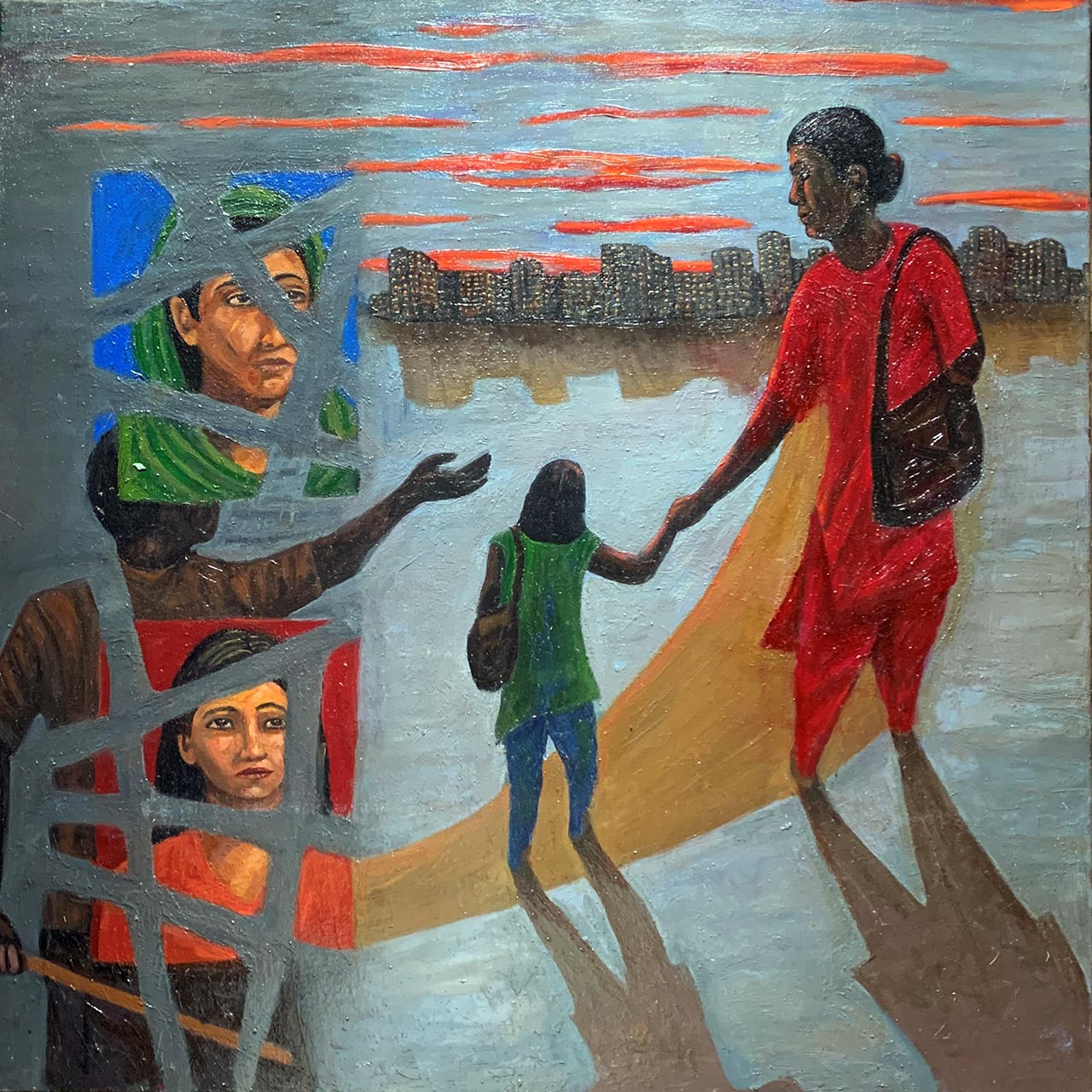
What Within, Without: Tales of Evanescence does, beyond its art, is an act of collective remembrance. By taking loss and making it a visible presence, Kaul actively resists the disappearance of lives from social memory. His art makes space for both mourning and commemoration – loured for people who never recovered and were never celebrated in their existence, or even in absence.
Curator Ina Puri’s statement about Kaul’s work as “resonating with the issues of inadequacy and the absence of closure or justice” feels particularly noteworthy in this context. Audiences discern that while the exhibition is a representation of myriad painful realities, it also insists on a shared sense of empathy. Each piece engages the viewer in existential questions about what it means to vanish. How does society cope with the notion of invisibility? And could even remembering be an act of justice?
Form, Texture, and Aesthetic Restraint
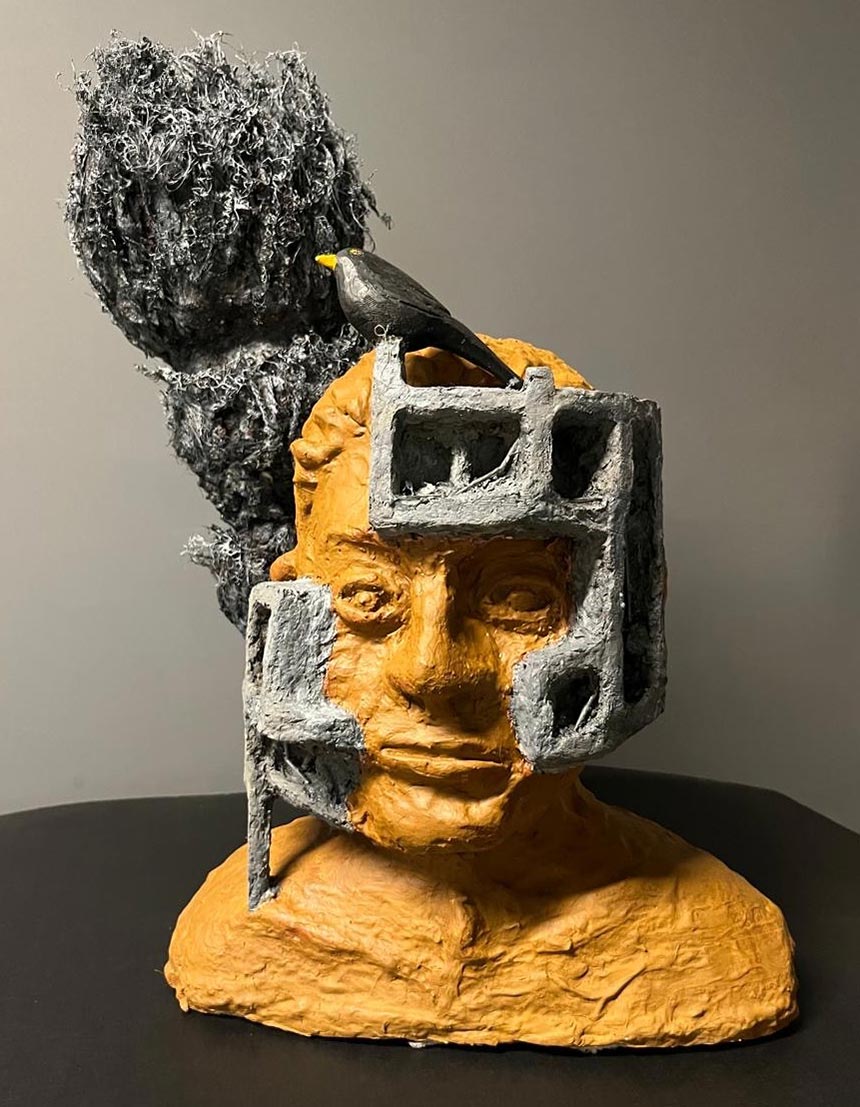
Kaul’s quiet palette is never by chance. The muted tones and balanced forms used don’t distract from each other; instead, they contribute to an overall sense of restraint and provide the viewer with a reminder of the gravity of the narratives. The textural surfaces beckon the viewer to engage slowly and with consideration, as if even the piece and forms ask for a meditative reading. This treatment elevates significance and promotes a focus on humanitarian depths rather than on a decorative display.
Conclusion
Within, Without: Tales of Evanescence carries significance not only as Kaul’s sixth major solo exhibition but also, and more importantly, as an art event that engages with the various humanitarian crises of our time. It unfolds stories of suffering trauma, disappearance, and conflict, with dignity and compassion. It brings together the spaces of individual suffering and collective trauma, art-making and moral responsibility.
It presents absence as presence, silence as witness, and invisibility as memory, giving us an exhibition that will be seared in the public memory of deep importance. People visiting Bikaner House and Urban Fringe will not only come across a series of multi-layered art objects but also be invited to think about their role as witnesses to the unstable, and often unbearable, state of being human.







